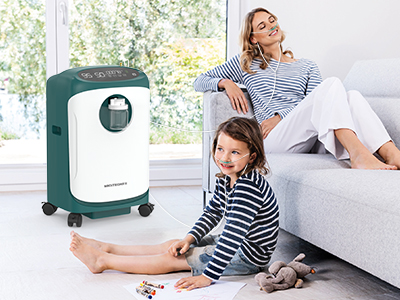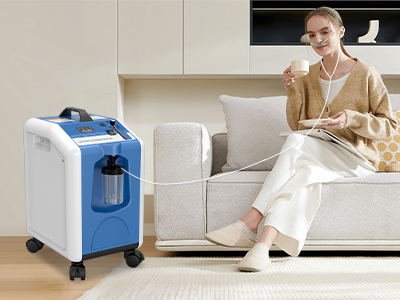08 Nov 2024
Oxygen concentrators are critical devices for individuals who require consistent oxygen therapy. Designed to deliver a steady supply of oxygen, they play an essential role in the lives of those with respiratory ailments such as COPD, pneumonia, and pulmonary fibrosis. Despite their significance, many users overlook the importance of thoroughly understanding their product manuals.

Why Product Manuals are Essential
Product manuals serve as a roadmap to proper oxygen concentrator use. They outline safety protocols that mitigate risks associated with improper handling, misuse, and maintenance neglect. By adhering to the instructions in these guides, users can avoid common issues like inadequate oxygen flow, overheating, and malfunctioning. A well-understood manual enhances the safety and longevity of the device, ultimately benefiting the user’s health and comfort.
Key Components of Oxygen Concentrator Manuals
The beginning of most oxygen concentrator manuals includes unpacking and setup instructions, guiding users through the initial steps of device installation. This section is crucial, as incorrect setup can lead to improper functioning or even damage to the unit. Manuals provide a detailed breakdown of each component—such as the compressor, filters, and flow meters—allowing users to familiarize themselves with the structure and controls of the machine. Understanding the anatomy of an oxygen concentrator empowers users to interact with the device confidently and effectively.

Understanding Operational Guidelines
To ensure optimal performance, manuals dedicate sections to operational guidelines. They explain how to power the machine on and adjust the oxygen flow rate according to prescribed levels. These steps are vital for maintaining correct oxygen delivery, as an incorrect flow rate can significantly impact the effectiveness of the therapy. Regular operational procedures outlined in the manual also offer tips for achieving efficient performance, helping users avoid issues that arise from prolonged usage or environmental factors, such as dust and moisture.
Maintenance and Cleaning Instructions
Oxygen concentrators require regular maintenance and cleaning to function effectively and hygienically. Manuals provide step-by-step instructions for cleaning the exterior, replacing filters, and sanitizing the internal components. These guides also specify the recommended cleaning frequency and detail the tools or solutions needed for each task. Adhering to these guidelines not only ensures a safe breathing environment but also extends the lifespan of the concentrator by preventing dirt accumulation and clogging.
Troubleshooting Common Issues
No device is immune to occasional malfunctions, and oxygen concentrators are no exception. Manuals typically include a troubleshooting section that addresses common issues, such as alarms, power interruptions, or inconsistent oxygen flow. This section serves as a quick reference guide, offering solutions for minor problems that users can resolve independently. However, the manual also provides advice on when to contact customer service or a technician, helping users distinguish between manageable issues and those requiring professional intervention.
Safety Precautions in Product Manuals
Safety is paramount when handling oxygen concentrators, as they involve high oxygen concentration levels that can be flammable under certain conditions. Manuals emphasize the importance of avoiding open flames, such as cigarettes or candles, near the device. Additionally, they highlight electrical safety measures, like avoiding power surges or overloaded sockets. Manuals often suggest emergency procedures, enabling users to handle unexpected situations, such as power outages, while maintaining safe oxygen access.
Additional Features and Accessories
Modern oxygen concentrators often come with additional features designed to enhance user experience, such as battery backups, remote controls, and compatibility with humidifier bottles. Product manuals cover these features in detail, explaining how to operate and maintain each one. Accessories, such as nasal cannulas and oxygen masks, are also commonly discussed in the manuals, with guidance on proper cleaning and replacement. These additional elements can improve comfort and flexibility, and the manual provides the necessary insights for maximizing their benefits.
FAQs in Product Manuals
Frequently asked questions in product manuals address routine concerns and provide quick answers for common user queries. Topics may include travel guidelines, battery charging, and altitude adjustments. These FAQs serve as a handy reference, helping users find immediate solutions to minor issues without needing to search extensively. Having these answers within the manual saves time and reassures users by providing immediate clarity on regular, yet critical, concerns.
Conclusion: Importance of Adhering to Product Manuals
The product manual is a vital tool for any oxygen concentrator user. By adhering to its guidelines, users can ensure safe, efficient, and long-lasting device performance. Routine consultation of the manual can prevent issues before they arise, enhance the overall oxygen therapy experience, and ensure that each breath remains as seamless and therapeutic as possible.
Keywords: oxygen concentrator
Originally published 08 Nov 2024, updated 08 Nov 2024.